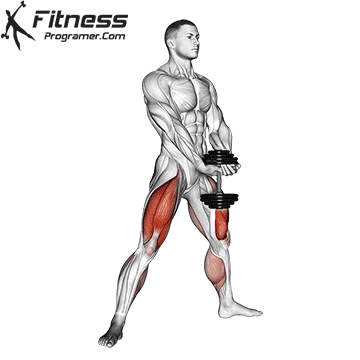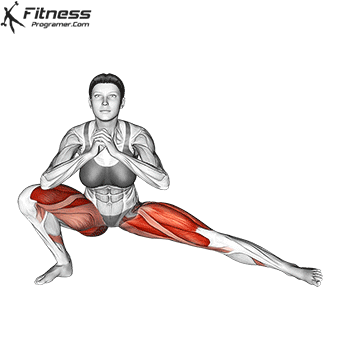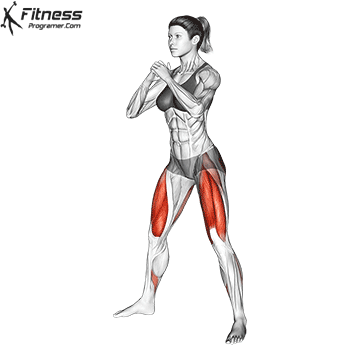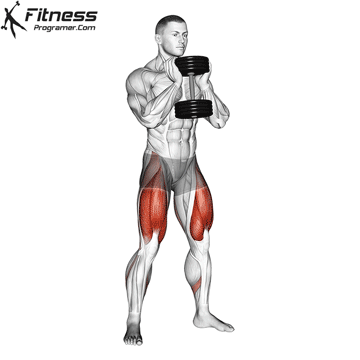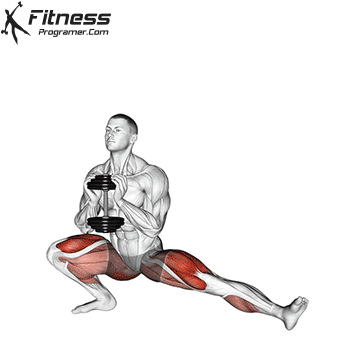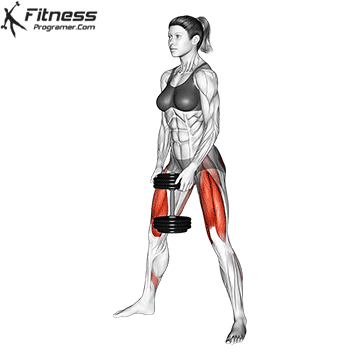Overview
The Bodyweight Plie Squat is a squat variation where the feet are positioned wider than shoulder-width with the toes pointed outward. This stance shifts the emphasis toward the inner thighs while still working the glutes, quads, and hamstrings. Unlike a standard squat, the torso remains more vertical and the knees track over the toes during descent, mimicking the position of a ballet plié.
With no equipment needed, it’s ideal for beginners, bodyweight training, warm-ups, or mobility-focused routines. It blends lower body strength with flexibility training, particularly in the adductors and glutes.
How to perform Bodyweight Plie Squat
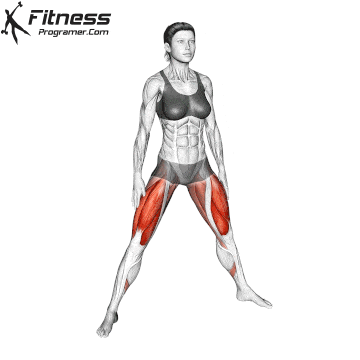
Stand with feet wider than shoulder-width and turn your toes out at about a 45-degree angle.
Keep your chest tall and engage your core to support your spine.
Push your knees out in line with your toes as you begin to lower into the squat.
Bend your knees and lower your hips straight down until your thighs are parallel to the floor or slightly lower.
Pause briefly at the bottom, keeping your back straight and core braced.
Drive through your heels to return to the starting position, squeezing your glutes at the top.
Tips for Proper Form
Keep your knees aligned with your toes to prevent strain on the knees.
Engage your core throughout to support your lower back.
Avoid leaning forward; keep the chest lifted and spine neutral.
Lower slowly with control to activate the inner thighs and glutes.
Use a mirror to check that your knees are tracking properly over your feet.
Common Mistakes
Letting knees cave inward, which can strain the joints and reduce adductor engagement.
Turning the feet out too far, which may cause instability in the ankles and knees.
Leaning forward excessively, shifting the load away from the intended muscles.
Rushing the movement, which reduces control and muscle activation.
Not squatting deep enough, limiting mobility gains and muscular engagement.
Benefits of the Bodyweight Plie Squat
Targets the inner thighs: The wide stance emphasizes adductor activation, helping tone and strengthen the inner thigh muscles.
Improves hip mobility: The deep external rotation of the hips helps open tight hip flexors and improve range of motion.
Builds glute and quad strength: The movement still engages major lower body muscles, especially the glutes and quads.
Enhances core stability and posture: Maintaining an upright torso during the squat improves trunk control and spinal alignment.
Accessible and joint-friendly: Bodyweight-only loading makes it suitable for all fitness levels, including those with joint sensitivity.
Improves lower body balance and symmetry: Helps train control and even muscle development across both sides of the body.
No equipment needed: Ideal for home workouts, warm-ups, travel training, or outdoor fitness.
How to Incorporate Into Your Routine
The Bodyweight Plie Squat fits well into a variety of training programs focused on strength, flexibility, or endurance.
- For Beginners: Perform 2 to 3 sets of 10 to 12 reps using only your bodyweight, focusing on slow controlled depth.
- For Hypertrophy: Add dumbbell or isometric holds for 3 to 4 sets of 12-15 reps to increase muscle tension.
- For Strength: Perform 4 sets of 6 to 8 slow reps, adding a dumbbell or kettlebell as a progression.
- For Functional Training: Pair 2 sets of 10 reps with hip mobility drills or lateral lunges for joint-friendly dynamic movement.
- For Circuit Training: Use as an active lower body station with 15 to 20 reps per round to elevate heart rate and build muscular endurance.
- For General Fitness: Include in full-body or lower-body routines 2 times a week to promote balance and flexibility.
- For Mobility: Use bodyweight-only for 2 sets of 8 reps as a dynamic warm-up or cooldown stretch.
Muscles Worked
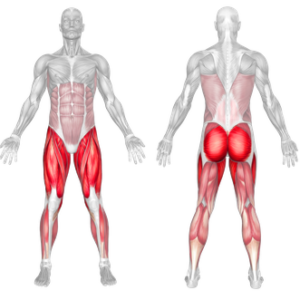
Frequently Asked Questions
Can I do the plie squat daily?
Yes, when done with bodyweight and good form, it’s low-impact enough to include regularly for mobility or conditioning.
Is this good for toning the inner thighs?
Absolutely. The wide stance and external hip rotation place greater emphasis on the adductors, helping strengthen and tone the inner thighs.
What if I cannot squat very deep?
Start with a reduced range and practice hip mobility drills. Over time, your flexibility and depth will improve.
Do I need shoes or can I go barefoot?
Both options work. Barefoot training can help improve ankle mobility and foot stability if done on a safe surface.

